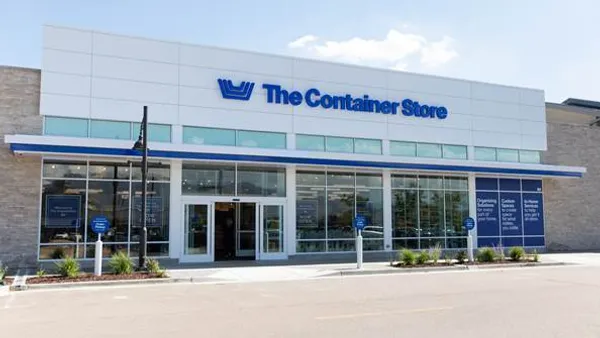The rise of online business brought IT solutions out of the backroom and into the forefront of retail operations. But, as another holiday buying season puts customer-facing solutions to the test, retailers are rethinking their tech stacks.
“E-commerce captured an outsized amount of attention, especially with non-tech executives, because you can just log on to the website and see it working,” Nikki Baird, VP of strategy at software company Aptos, said in an interview with sister publication CIO Dive.
Companies also leaned on technology to enhance the in-store experience, investing in point-of-sale and inventory- and order-management solutions, according to a survey of 300 retail tech executives by Aptos and Bain & Company.
The investments often left retailers with a jumble of poorly integrated tools, with new solutions piled atop legacy systems in a race to provide the full range of omnichannel in-store and online purchase and delivery options.
“You don't have to have three different payment devices to support in-store sales, online shipped-to-home sales and returns,” Baird said. “But they’ve thrown more hardware and more technology into the store in order to be able to do all of those things.”
Rationalizing technology and customer experience across the stack — what Aptos calls a unified-commerce strategy — is a priority for three-quarters of all retailers.
The rationalization supposes a major overhaul. Companies pursuing unified commerce are pushing beyond omnichannel orthodoxy, integrating disparate customer data, systems and sales channels while modernizing both front-end and backroom technologies.
Unifying the stack
To enable transformation, retail tech leaders have leaned on cloud infrastructure and SaaS solutions to shore up e-commerce platforms, supply chain solutions and CRM applications, the report found.
At the individual store level, tech decisions are driven by CIOs, CTOs and other head technologists with the skills to manage networking and security protocols, Baird said.
Store managers, however, often have diverging priorities.
IT wants to rationalize the stack and make it easier to manage, while store managers want to keep the systems they have and avoid the painful process of retraining staff, Baird said.
“I don't think IT leaders have done a good enough job in selling store operations groups on how their lives ultimately could be better,” said Baird, noting there’s a tendency to avoid potentially disruptive in-store changes.
“CIOs get fired when a store shuts down,” Baird said. “So, if there's one thing you're going to do as a CIO in retail is you’re going to make sure that the stores never have to shut down.”
As brick-and-mortar behemoth Walmart deploys generative AI, fast-food giant McDonald’s beefs up in-store analytics and consumer goods leader Unilever expands AI research and development, other companies are sensing the need to optimize data operations and pay down technical debt.
“There's a ticking time bomb in stores around hardware,” Baird said. “When technology supply chains were constrained, retailers were not replacing hardware. A lot of them are still trying to move off of Windows 10 and we’re going to start running out of lifespan on Windows 11, too.”
Upcoming changes to Payment Card Industry compliance standards, set for March, will make some current payment devices obsolete, creating another headache for companies mired in technical debt — and a mitigation intervention opportunity for CIOs.















